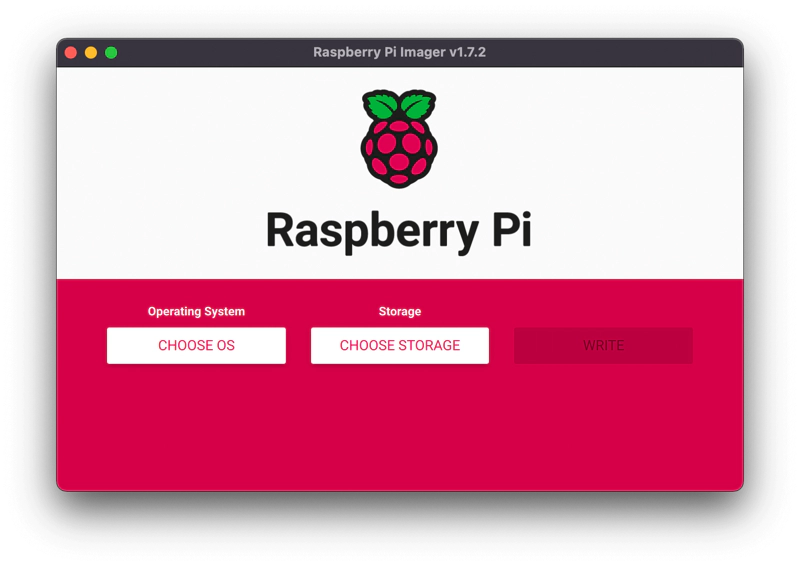Loading Raspberry Pi OS to an SD card
Load RPi OS to an SD card¶
Note
You will need a micro-sd memory with at least 32 GB capacity.
There are two methods:
- Graphical method with the Raspberry Pi Imager.
- Using the Linux terminal to manually flash the OS.
Alternate software:
- Command line tool, similar to the Raspberry Pi Imager: https://github.com/tonicsoft/raspios-headless-imager
Raspberry Pi Imager¶
The Raspberry Pi Imager is a graphical program that automatically writes an Operating System for the Raspberry Pi computer to an SD card, and configures common options.
Install the program¶
Install Raspberry Pi OS using Raspberry Pi Imager
The imager program looks like this:
Write the OS to the SD card¶
To use it:
- Choose OS → Other general-pusrpose OS → Ubuntu → Ubuntu Server 20.04 LTS
- Insert the sd in your computer
- Choose storage (detect your sd automatically)
- In the configuration option:
- Enable SSH
- Enable set host name
- Set username and password. (typically: pi, raspberry)
- Enable configure wireless LAN
- Enable set local settings
- Save and write
- Safely unmount and eject the micro SD card. Then insert it into the Raspberry Pi, and plug it to the power supply.
Manual method¶
Manually wirte the OS from a Linux computer.
Write the OS to an SD card¶
Follow the instructions in the system images guide.
Configure the user¶
On the bootfs partition add a ssh file and userconf file:
# Run from SD on the "bootfs" partition.
touch ssh
paste <(echo "pi:") <(openssl passwd -6 'raspberry') -d "" > userconf
Configure WiFi¶
Warning
The following method for wifi connection setup is no longer supported according to the docs (2023-11-02): "Previous versions of Raspberry Pi OS made use of a wpa_supplicant.conf file which could be placed into the boot folder to configure wireless network settings. This is no longer possible from Raspberry Pi OS Bookworm onwards." "To configure wireless network access at first boot in a headless Raspberry Pi, use the advanced settings menu in Raspberry Pi Imager." Instead use the Raspberry Pi Imager software, as explained here. You can also check for an answer here: https://raspberrypi.stackexchange.com/q/144850/51575
Create a wpa_supplicant.conf file in the same folder with these contents (details here):
ctrl_interface=DIR=/var/run/wpa_supplicant GROUP=netdev
country=<Insert 2 letter ISO 3166-1 country code here>
update_config=1
network={
ssid="<Name of your wireless LAN>"
psk="<Password for your wireless LAN>"
}
Info
Note that only 2.4GHz networks work for the Raspberry Pi 3 (5GHz networks do not work).
Next steps¶
Connect to the Raspberry¶
If you configured your Pi's networking details correctly in the previous steps, you can try to connect to the Pi through the network (i.e. headlessly) by following these instructions.
The easiest and safest way to connect to the Pi is to use a spare display and keyboard. Once you plug it in and it boots, you'll be asked to input the user (e.g. pi) and the password (e.g. raspberry). More information in the standalone pi setup guide.
Updates and Configuration¶
If you installed Raspberry Pi OS, run sudo raspi-config and use the menus to:
- Enable I2C, under
Interface Options.
Continue with the setup¶
After connecting to the pi, continue with the software setup guide.
